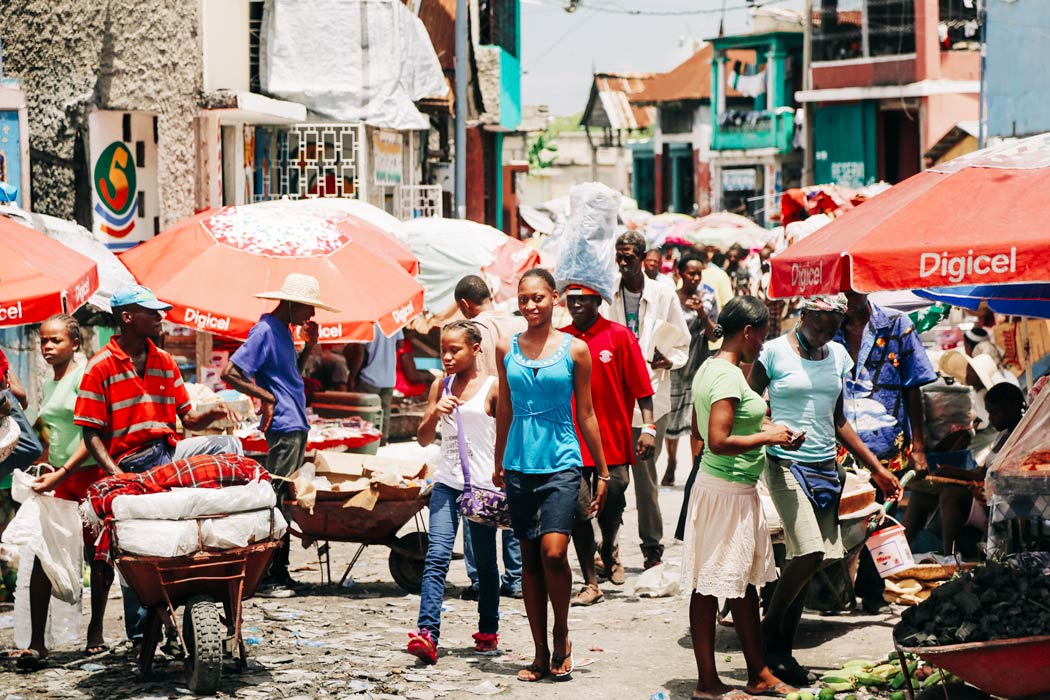For the children and their families living in poverty, social distancing and access to medical care can be difficult. This means that during a pandemic, the poor are unevenly affected and among the most vulnerable.
17 Apr, 2020
With over 200 countries affected and close to two million confirmed cases at the time of writing, COVID-19 is officially a pandemic, according to the World Health Organisation.
Pandemics are diseases that have spread across multiple continents and although the current headlines are saturated with coronavirus-related news, COVID-19 is not the first or only pandemic to affect the world.
In the last 100 years, pandemics like influenza, cholera and HIV/AIDS have ravaged through humanity. With each pandemic, people living in poverty are among the most vulnerable and at risk of harm.
Infectious diseases can be transmitted to all people regardless of their income levels and ethnicity, but people living in poverty are overexposed and unevenly impacted by the many social, economic and physical consequences of a pandemic.
With overexposure to risk, limited access to healthcare and uneven impacts on women and children, here are three ways pandemics affect the poor.
1. The poor are overexposed to risk
Social distancing measures have added some inconvenience and friction to our lives, but many in developing communities don't have a secure place to 'stay home'.
For millions of people living in dilapidated conditions and slum communities, social distancing is practically unattainable and 'staying home' is just as risky as a public gathering.
According to research, people living in lower economic areas are more likely to catch an infectious disease. During the influenza pandemic, poverty and inequality in wealth and living standards were key factors that exacerbated transmission and mortality rates.
Diseases are easily transmitted in areas of extreme poverty, where people may share small spaces with multiple people or live in congested communities. During the initial spread of Ebola, people living in slums and shanty towns in Liberia were infected at a rate more than three times that of people living in affluent areas.

People living in poverty also face additional challenges such as accessing clean water and maintaining adequate hygiene. Vulnerable communities lack consistent access to clean water and with not enough water to go around, handwashing can be seen as an excessive use of water. During a pandemic like COVID-19, frequent handwashing is an effective barrier against the spread of harmful diseases but without access to sanitation and disinfectant products, children and their families are ultimately exposed to diseases.
2. Access to healthcare is limited
During a pandemic, the gaps in health care services are more evident than ever. When diseases like COVID-19 affect a community, early treatment and medical attention is crucial but for people living in poverty, distance and affordability are challenging barriers. For the poor, the choice of foregoing a day of work to visit a hospital can be an expensive option.

The cost of treatment is largely unaffordable for people living below the poverty line. In many developing nations, the absence of a public health care system, and the resulting financial burden of hospitalisation, is a massive deterrent to seeking medical care. Without disposable cash, many people living in poverty are unable to afford testing and treatment during a pandemic.
In a study of 11 countries in Africa and Southeast Asia, researchers discovered that an absence of healthcare forced many people living in poverty to rely on high-interest rate loans or handouts from moneylenders, driving them further into debt and exposing many to exploitation. The effect of a pandemic on these communities is multi-faceted. Without a safety net, a health risk can reinforce existing inequalities and hardships.
3. Women and children are unequally affected
People living in poverty are mercilessly impacted during a pandemic but among the poor, women and children face additional vulnerabilities.
Across many rural communities in developing nations, women are predominantly responsible for collecting and preparing food for their family. Often, this requires visits to street markets, where their exposure to infectious diseases are increased.

It's also not unusual for women and children in rural communities to travel long distances to collect water from wells in neighbouring villages. Around the world, women will collectively spend around 200 million hours every day, collecting water.
Most families living in poverty lack the resources to stockpile their food and essentials, requiring women and children to frequently visit markets and water wells.
Inside the home, women also take on the role as a primary carer for children and elderly, making it difficult to practice basic social distancing measures.
How can you help?
During a pandemic like COVID-19, the poorest communities are overexposed and unequally impacted by sickness and harm. To help provide food, water, medical care and other essential support to vulnerable children during times of crisis, please give to Compassion's Disaster Relief Crirical Needs.
Words by Shona Yang
Photos by Ryan Johnson, Emily Turner and Annaleise Germon
Sources:
- Robert Wood Johnson Foundation, 2008
- WHO, 2019
- New York Times, 2020
- Partners in Health, 2016
- Action Aid, 2020
- ODI, 2020
- UNICEF, 2018

